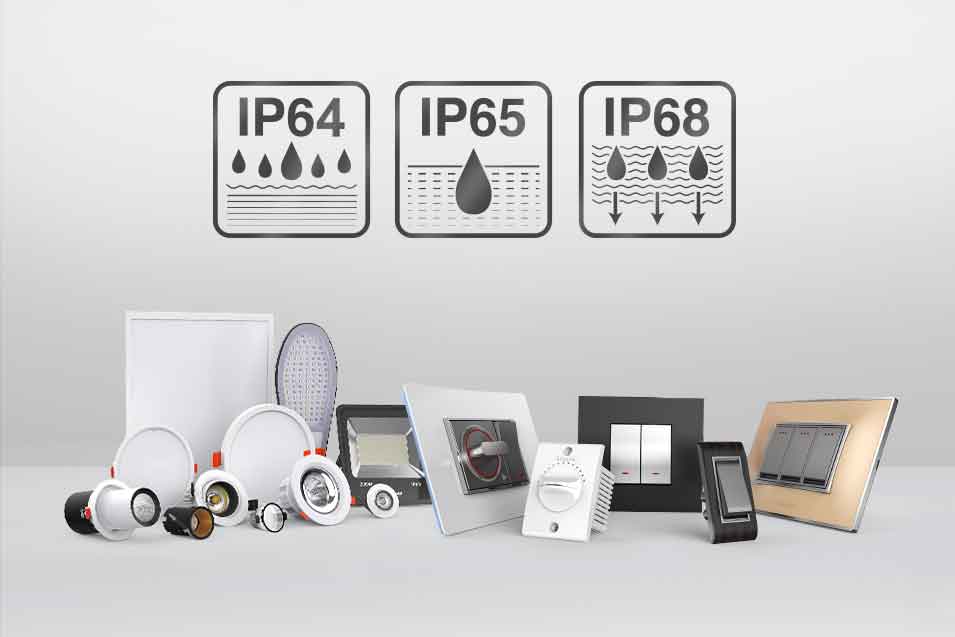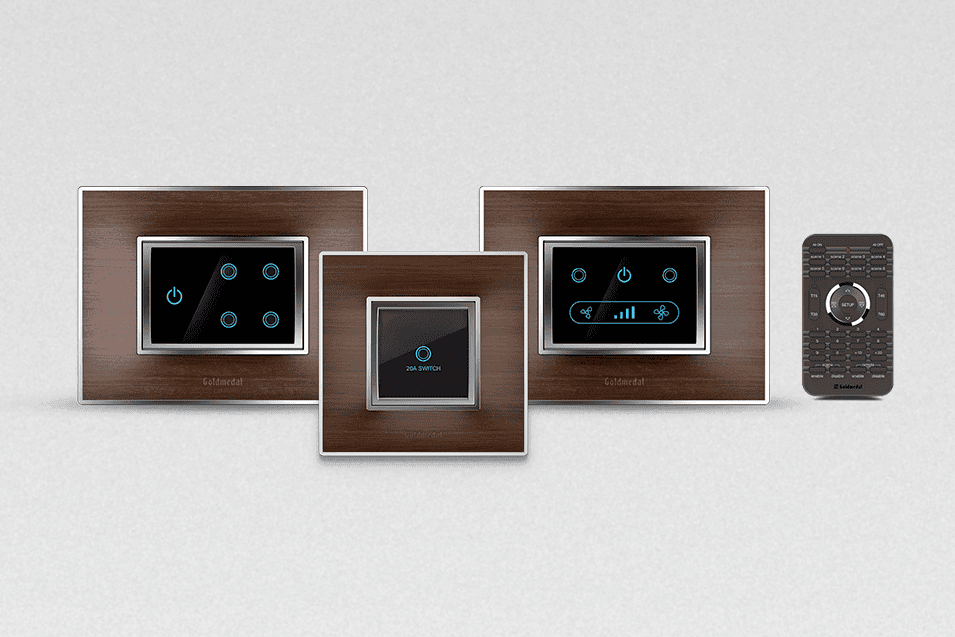
Understanding IP Rating (Ingress Protection) for Switches, Sockets and Outdoor Fixtures
28th October 2025 | Written By: Rika Aash | Read Time: 3min | Last Updated: 28th October 2025
IP or Ingress Protection ratings is a common term you must have come across while looking for switches, sockets or outdoor fixtures. These ratings are crucial as they ensure durability, safety, and performance. In the following blog, we will understand in detail about IP ratings and how choosing the right rating fixture can help prevent electrical hazards, malfunction, and corrosion – especially in outdoor or humid areas.
What is IP Rating?
IP stands for Ingress Protection. The IP ratings indicate how well electric products are protected against dust and water. These ratings are two-digit numbers, whereby the first digit stands for the level of protection against solids i.e. dust. The second digit in IP ratings stands for level of protection against liquid i.e. water. Defined by international standard IEC 60529, IP ratings will always be mentioned as IP44, IP65, or IP68.
Decoding the IP Rating
Let us understand what each digit in a standard IP ratings mean in the table below.
| Digit | Significance |
|---|---|
| 0 | No protection |
| 1-4 | Protection from large to small objects |
| 5 | Dust protected (limited ingress) |
| 6 | Complete protection against dust and other particles |
| Digit | Significance |
|---|---|
| 0 | No protection |
| 1-4 | Protection from drips and splashes |
| 5 | Protection against water jets |
| 6 | Complete protection against powerful water jets |
| 7 | Protection against temporary immersion |
| 8 | Protection against continuous immersion |
| 9 | Protected against high-pressure and temperature water jets |
IP ratings for outdoor fixtures, switches and sockets
For switches, sockets, and outdoor fixtures, a suitable IP rating ensures safety, durability, and consistent performance even in challenging conditions. Higher IP-rated products are ideal for outdoor installations, bathrooms, and industrial areas, where exposure to dust or water is common.
Outdoor sockets
An IP66 rating offers excellent protection against powerful water jets, ensuring safety during cleaning or heavy rainfall. It is recommended to choose outdoor sockets with an IP66 rating. These sockets also feature robust gaskets that keep them durable and reliable even after years of use.
Garden pathway lighting
When choosing garden pathway lighting, it’s important to ensure protection against rainwater and water exposure from lawn sprinklers or garden hoses. In such cases, an IP65 rating offers reliable protection against dust and low-pressure water jets from any direction.
Bathroom and wet room switches/lighting
Though bathrooms and wet rooms are considered indoor spaces, they still demand ingress protection. Lights installed above showers should have a minimum rating of IP65, while general bathroom lighting can typically use IP44-rated fixtures, depending on how close they are to water sources.
Conclusion
Good understanding of IP ratings will help you select the switches, sockets, and fixtures that are ideal for your home or workspace. Additionally, these ratings don’t just ensure safety but also extends the lifespan and reliability on electrical products. Selecting products smartly based with correct IP ratings guarantees protection against environmental factors and peace of mind for years to come.

Frequently Asked Questions (FAQs) :
- Q1. What is the difference between IP44, IP65, and IP68 ratings? The main difference between IP44, IP65, and IP68 ratings is the protection levels against dust and water. IP44 offers protection from solid objects and water splashes, suitable for indoor areas like bathrooms. IP65 provides complete dust protection and resistance to low-pressure water jets, ideal for outdoor fixtures. IP68 offers the highest protection, making products fully dust-tight and safe for continuous immersion in water.
- Q2. Why do outdoor switches and sockets need higher IP ratings? Outdoor switches and sockets need higher IP ratings because they are highly exposed to dust, rain, and humidity that can cause corrosion or electrical faults. A higher IP rating ensures better protection against water and solid particles, maintaining safety, durability, and reliable performance in outdoor conditions.
- Q3. Can I use an indoor-rated switch or socket outdoors if it’s covered? It’s not recommended to use an indoor-rated switch or socket outdoors, even if it’s covered. Moisture, dust, and temperature changes can still seep in and cause damage or electrical hazards. It is suggested to used switch or sockets with good IP rating for outdoors.
- Q4. How do I know which IP rating is suitable for bathroom lighting? To choose the right IP rating for bathroom lighting, consider how close the fixture will be to water sources. Match the IP ratings to the level of moisture exposure for maximum safety. Choose a minimum rating of IP65 for full water protection for lights placed directly above showers or inside wet zones.




